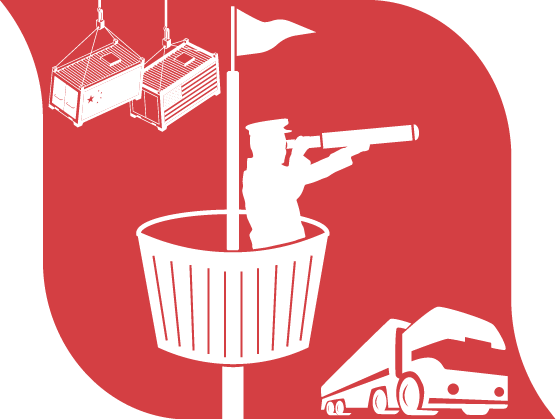ANLOG Tracking and Tracing
Monitoring and Reporting System for Machinery and Project Logistics
The ANLOG logistics software is converted on the basis of a portal concept using internet technologies. Portals facilitate intelligent solutions for data access and data management. The employment of internet technologies ensures that the software can be used via the internet/extranet with a standard browser.
A portal is a web-orientated application system, in which tables of contents and services can be offered clearly to a specific target group. By using it in a web browser, access can be created irrespective of place, which can be extended by a multi-channel function to different terminating equipment.
A portal is dynamically constructed and thus more than a pure link collection. Besides search machines, the contents and services integrated into the portal also include navigation, data integration, personalizing, notification, information/knowledge management, workflow, application integration, and infrastructure services.
The system architecture of ANLOG is so constructed that it can meet the requirements of a uniform and transparent access to the entire logistic services at any place, at any time, with different terminating equipment.
The Presentation Logic is encapsulated in the Client Tier. Users obtain access to ANLOG by means of standardized clients.
The application is provided already prepared for and according to the user’s individual needs, task and language requirements. The user can also make adjustments at any time to suit his personal wishes. Furthermore, a variety of terminating equipment can be operated – from PC / Browser (HTML, XML), mobile ‘WAP Handy’, to Handhelds. Access to required information is gained via components, which are picked up by means of the Component Access Layer (CAL).
The Server Tier provides the actual application logic. It represents the core of the application (program module):
- User/right management
- Document management
- Search
- Report generation/configuration
- Storage space administration
- Order data
- Label printing
- Delivery date administration
- Receipt processing
- Details on packages
- Packing/shipping lists
- Track and Trace…
Data exchange
Data exchange between ANLOG and external systems is performed via a regulatable integration server. This is in a position to join different systems with one another in a unified way and to perform transformations of different entry and exit formats. The basic technology is XML/XSL, with which it is possible to transmit and further process documents without breaks in the media. Electronic data can be exchanged directly between e.g. ANLOG and SAP.
Application possibilities
With this information system, which can be viewed by all participants in the process by internet access, the status of a single part is illustrated exactly, from (e.g.) the SAP order transmitted by the interface to the information system on part no. level up to the final destination, via all intermediate stations (e.g. collection and distribution warehouses). It is possible to follow the status by concretely formulated questions, e.g. inquiry with the detail of order no. + part no. – the system is different from conventional systems in that information can not only be called up at the transmittance level (like with a lot of express service providers) but also down to part no. and/or item no.
Further, scanned in documents can be “attached” to the single part, the consignment or also to the order that goes with it, and these can be viewed and called up permanently via the internet. They can be B/Ls, AWBs, as well as certificates and commercial invoices. In addition to pure software, Project Management can be offered as a process orientated control system with management, communication and co-ordinating tasks that embrace all countries (4PL logistics provider). This is based on orders, which are transmitted with delivery dates. Keeping to the given dates, the optimal and most favorably priced packing and transport variants can be determined – involving the customer’s preferred service provider. (Consolidation of single consignments, if the time schedule allows it etc.). At the same time the transport chain, which is illustrated as an unbroken chain in the information system, is monitored.
A lot is possible with this information system.
